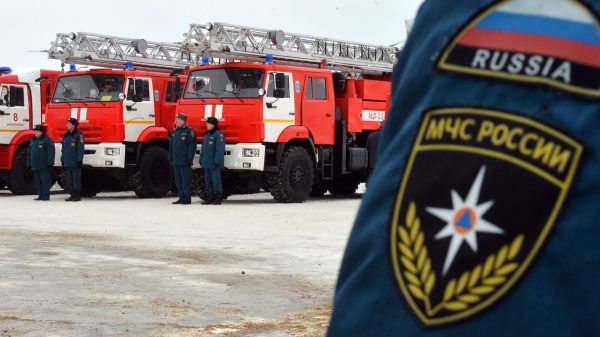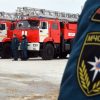The Jack Britt high school girls’ soccer team was playing on a muggy evening in Fayetteville, North Carolina, when the sky grew dark. It was 30 September 2015. Shana Williams Turner, a 46-year-old teacher in the school’s special education department, was supervising. She watched as the weather started to turn.
Thunder rumbled above, each clap bringing lightning closer. Shana saw a lightning bolt hit a grocery store across the street. Scared, she and the choir teacher, Richard Butler, ran to a nearby ticket booth to find shelter.
selects embed
Lightning struck again with a deafening crack. A transformer 30 feet awayexploded and burst into flames. Shana felt excruciating pain, as if her shoulders had been reduced to burning jelly, and she was thrown to the concrete.
Richard helped pick her up as other colleagues rushed over and asked what had happened. “I don’t know exactly. I think I got struck by lightning,” Shana replied.
“What do you need?” they asked repeatedly.
“I don’t know what I need. But my arm is on fire, my feet are tingling and my chest hurts,” she moaned.
Shana’s 15-year-old son, Dillon, the youngest of her four children, had seen everything. A student at the school, he had been waiting for a ride home. “Mom,” he cried. “You swore!”
Shana got up. By outward appearances, she seemed fine, if a little dazed. No one called an ambulance. Shana was stunned: “Did I really just get struck?”
She got into her car with Dillon and set off for home. As she pulled out of the parking lot, she called her sister. “Hey Ronda, can you look up on the computer what you do when you get struck by lightning?” There was a pause followed by some swearing.
“You go to the hospital!” Ronda shot back.
Shana had been to the local hospital before, but her mind felt hazy. “Ronda,” she said, as her chest tightened and the ringing in her ears grew louder. “I don’t know how to get there.”
Dillon texted Greg, Shana’s long-term partner, and told him what had happened. As Shana pulled into the driveway, Greg ran out of the house, helped Shana into the passenger seat, and sped to nearby Cape Fear Valley medical center.
•••
When lightning hits a person, it sends 300m volts of electricity across the body in three milliseconds. The current flows externally, disrupting or short-circuiting the body’s electrical systems, such as the one that controls the heart. Cardiac arrest is the most common cause of death from a lightning strike. Brain damage from blunt-force trauma caused by the shock wave is also common. The jolt can severely burn skin, and in some cases it etches an intricate web of scars on the body that resembles the form of a lightning bolt itself, known as Lichtenberg figures, which fade within days for reasons unknown. Most people survive because the lightning hits the ground nearby or passes through a taller object such as a tree, or, in Shana’s case, the transformer.
Greg pulled up to the emergency room entrance and Shana stumbled out. A security guard dragged her into the emergency room. When doctors learned that Shana had been struck by lightning, she was rushed on to a gurney and hooked up to an electrocardiogram. Nurses dashed around her in a blur, taking more vitals. Later, a doctor said that her blood pressure had been abnormally high but that there had been no burns or obvious signs of injury. For that reason, no additional tests were ordered.
Over the following weeks, every muscle in Shana’s body ached and her ears rang. She felt constantly fatigued. She struggled to recall words, and her short-term memory failed her. One day, she was in class and one of her students approached her. She went to say his name but couldn’t remember it. She hesitated, stuttered. “Give me a minute,” she said, turning toward the blackboard to cry.
When Shana saw a neurologist, he was confused after she described the ringing in the ears, the hot tingling sensations, and how her right arm would swell up for no apparent reason. It was only later, when Shana drove to a cardiologist’s office and let them see her arm pulsate before their eyes, that they began to take her seriously. She was prescribed six medications, including a painkiller, an antidepressant and a potent anti-fatigue medicine.
The complications stemming from the lightning strike extended beyond the physical. Shana struggled to juggle her work commitments and her family life, which included three teenagers. She became scared of public places; a flash from a camera or a sudden noise could trigger her anxiety. She was also petrified of the possibility of being caught outside during a thunderstorm. When dark clouds approached, her joints would ache and her anxiety would soar.
Shana and Greg began to argue. Shana felt that he was not trying hard enough to understand the complexities of her growing health problems – and perhaps even doubted them altogether. When she had to visit the neurologist, Greg forgot to request time off work to go with her. It was there that she says she learned she had damage to the right frontal lobe, a portion of the brain that helps control memory. The neurologist said that this was almost certainly the result of the lightning strike. According to Shana, Greg never asked how it went; he found out two months later during another argument. They separated soon after, bringing a seven-year relationship to a close.
After a year or so, Shana was asked by her insurance company to undertake an “independent medical examination” to challenge her workplace injury claim. After four hours of IQ, psychological and personality tests, Shana says, a neuropsychologist concluded that most of her symptoms were the result of stress. He explained away Shana’s brain damage, too, saying that she had probably had a stroke sometime in the past year. “The thing with you is you have absolutely no burns,” he said, according to Shana. She was stunned; she had read academic research that said that physical injuries, including burns, occur in less than half of lightning strike cases. Soon, her financial support would be terminated, with workers’ compensation no longer covering any of her medical expenses. After the appointment, she went to her car and broke down in tears.
Even keeping her medication and doctor visits to the bare minimum, Shana’s medical bills still cost her $8,000 a year after insurance. She struggled to pay these bills and support her family on a teacher’s salary; she fell behind on the payments for her car, which was repossessed.
Shana felt increasingly alone and started to sequester herself from the world. She watched as friends messaged her less and less. Then, one day, she received a text from her sister’s friend. It was a link to a Facebook page called “Lightning Strike and Electric Shock Survivors Support Group”. Shana got sucked in, spending hours reading survivor stories like her own. No one believed them, either. They were organizing a conference in Virginia. She quickly booked a bus ticket.
•••
Walking through the sliding doors of Comfort Inn & Suites, Shana didn’t know what to expect.
Lightning Strike and Electric Shock Survivors International was founded in 1989 by Steve Marshburn, who had been working behind the drive-up till of a bank 20 years earlier when lightning struck, traveling through a speaker and breaking his back. He has had surgery 48 times since. Back then, he says, there was no research being done on lightning injuries, so he started to document the effects he was experiencing and created a support group – organizing two conferences a year, so that survivors of lightning strikes and electric shocks could swap stories and tips on how to cope with their often debilitating injuries, as well as the skepticism of those around them.
In the conference room, two dozen people, most older than 50, sat around a table facing a projector screen. To the left of the entrance, three graying women were selling books and ring-bound academic papers, with titles like Life After Shock, Vol I and Behavioral Consequences of Lightning and Electrical Injury.
A middle-aged man with a thick brown chevron moustache beckoned Shana to the corner of the room. It was Gary Reynolds, a three-time lightning strike survivor who had contacted her via the Facebook group. She sat beside him. Soon, survivors started telling their stories one by one around the table. “Hi. I’m Shana. I’m from Fayetteville, North Carolina,” she told the group before breaking into tears. Lisa Reynolds, Gary’s wife, came over to comfort her. Someone else brought a box of tissues.
“What you’re experiencing, most of us have been through,” a man named Norman Baldwin reassured her from across the table. Norman was a former coalminer from Boone county, West Virginia, who had survived a high-voltage electric shock from a piece of heavy machinery in 2005. “You’re not an outsider here,” he said.
Tears streamed down Shana’s face as she gathered herself. She told them about the medical confusion surrounding her injuries and the disbelief from family and friends. The room nodded along knowingly. A man named Rodney Burkholder came to her side and stayed throughout. He says the group was of enormous support after he received a shock from a low-hanging power line in Virginia. His neighbor, who was nearby, heard a zap and watched as Burkholder fell from his ladder to the ground, where he drifted in and out of consciousness. “Where is Michael?” he asked his confused wife, who knew no one by that name. Friends have suggested that it might have been a reference to the archangel Michael. Lightning and electricity have long inspired awe and allusions to the divine. One group member even put “Thor” on his nametag, for the Norse god of thunder.
Shana was the only newcomer to the group. For much of the conference, whenever there was a break between speakers, longtime members approached to offer advice. She was given a wad of academic papers about lightning injuries. Keith, an electric shock survivor who uses a wheelchair, told Shana to make a list of things she was grateful for. The group could see how fragile Shana was and offered her constant hugs, aware of the devastating effects an electric injury can have on one’s mental health. The group conducted a survey in 2017 of 595 of its lightning strike members and found that 280 of them suffered from depression and 67 were suicidal. Steve Marshburn, the founder, has personally talked 27 people out of suicide. “God,” he said, “gives you strength to do what you got to do.”
Daughters of the bomb: my reckoning with Hiroshima, 75 years later
Read more
Toward the end of the conference, a man named Johnny approached the projector screen. An airplane engineer, he was on shift when lightning hit the aircraft he was working on and threw him to the ground. He showed the group a local news report in which he’d been interviewed just after it had happened. He explained that he’d continued his shift afterward, since he seemed fine, but that he had later developed a host of debilitating symptoms that had kept him out of full-time work for two years. Shana listened from her seat, noting the similarities between his story and hers, and she thought about how grateful she was that she had found people who actually understood her experience first-hand. The next day, Shana left Lynchburg emotionally drained but happy, believing that she had found a new family. She hasn’t missed a conference since.
•••
Shana’s journey toward accepting herself post-strike can be found inked across her body. On her upper-right shoulder blade, she has a tattoo of a lightning bolt striking a butterfly, which signifies the new her. On her ankle, she has a tattoo of an interlocking chain that she says represents the hold the lightning will always have on her. Attached to the chain are charms detailing her story: a thundercloud for the strike, a hand grasping a lightning bolt for her getting a grip on new challenges. Most important, though, she has charms for her four children and two grandchildren. “They are my life,” she says. “I’m alive for them.”
In 2019, just as she got the last of those tattoos, Shana had started to come to terms with her new life. She was keeping to a strict routine, plotting her day step-by-step. When she got out of bed in the morning, she took her pills. She always kept her keys on a hook and her wallet in the car, otherwise she’d forget them, and she no longer carried a purse, as she too often put it down and then walked off without it. The constant pain continued, but Shana took measures to manage it. And with the help of her family and the support group, she started feeling less isolated. Shana adopted Bolt, a great dane puppy being trained as a support dog. When Shana drives, Bolt sits in the back with his head on the front console and listens to Shana’s breathing. If it starts to slow, a sign that she is dozing off, Bolt puts his head on her shoulder and nudges her with his nose.
Meanwhile, Shana’s eldest daughter pressed her to sign up for a couple of dating sites. Shana agreed, but she made sure she was upfront in her profile that she had been struck by lightning, which she had grown to accept as part of her identity. In January 2020, Shana met Don. A New Yorker with a low-cut peppered beard, Don drove over an hour to her local Taco Bell, where, over chicken tacos and a Nachos BellGrande, she told him what it was like being struck by lightning. Don was humble and nonjudgmental, and there was an instant attraction – it felt as if they had known each other for ever. In late April, Don moved in.
Many couples have something – a first date, a first kiss, a first holiday – that marks a watershed moment in their relationship. For Shana and Don, it was their first thunderstorm. Outside, on the front porch, Shana watched as dark, rumbling clouds approached. Her joints started to ache and her chest tightened. Don took her hand and led her inside without saying a word. He turned up the TV to drown out the thunder and held Shana close under her blanket. “Everything’s going to be OK,” he told her. “I’m here.”
-
In the US, the National Suicide Prevention Lifeline is at 800-273-8255 or chat for support. You can also text HOME to 741741 to connect with a crisis text line counselor. In the UK and Ireland, Samaritans can be contacted on 116 123 or email jo@samaritans.org or jo@samaritans.ie. In Australia, the crisis support service Lifeline is 13 11 14. Other international helplines can be found at www.befrienders.org
This story originally appeared on the digital storytelling platform Narratively. Looking for more great work? Here are some suggestions:
-
The masked vigilantes coming for your horrible boss
-
Her best friend was her secret stalker
-
The heroines of Halifax and the world’s greatest explosion























































Свежие комментарии